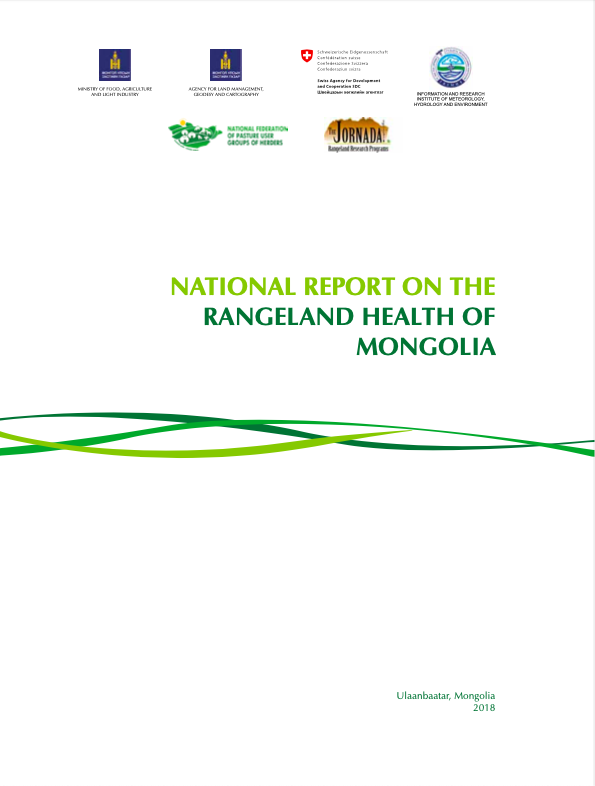Resource information
As one of the few remaining countries with a robust, nomadic pastoral culture supported by extensive natural rangelands, Mongolia is well positioned to offer sustainable, rangeland-based goods and services to its citizens and to global consumers who place a premium on sustainable products. The primary challenge to sustainable livestock production in Mongolia is that rangeland health, the set of environmental conditions that sustain the productivity and biodiversity of rangelands is in decline in many areas. National livestock numbers, at 110.8 million sheep units in 2018 according to the National Statistical Office, are unprecedented in the historical record. As a first step toward sustainable rangeland management, the Swiss Agency for Development and Cooperation’s Green Gold project collaborated with government ministries and universities to develop new assessment, monitoring, and management procedures to understand and improve rangeland health across Mongolia. A nationally standardized methodology for rangeland monitoring provides robust evaluations of long-term changes in rangeland health. The National Agency for Meteorology and Environmental Monitoring (NAMEM) now has the capacity to continue the new monitoring procedures and report to the nation on these trends. New tools for interpreting rangeland health and developing spatially-explicit management recommendations called Ecological Site Descriptions (ESDs) were developed by scientists and professionals from universities, research institutes and the agencies such as Agency of Land Management, Geodesy and Cartography (ALMGaC) and NAMEM. The new procedures for monitoring and interpretation were implemented beginning in 2011 by NAMEM at its 1516 long-term monitoring sites.

